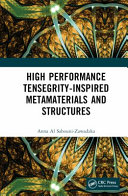

Most ebook files are in PDF format, so you can easily read them using various software such as Foxit Reader or directly on the Google Chrome browser.
Some ebook files are released by publishers in other formats such as .awz, .mobi, .epub, .fb2, etc. You may need to install specific software to read these formats on mobile/PC, such as Calibre.
Please read the tutorial at this link: https://ebookbell.com/faq
We offer FREE conversion to the popular formats you request; however, this may take some time. Therefore, right after payment, please email us, and we will try to provide the service as quickly as possible.
For some exceptional file formats or broken links (if any), please refrain from opening any disputes. Instead, email us first, and we will try to assist within a maximum of 6 hours.
EbookBell Team

0.0
0 reviewsFollowing current trends toward development of novel materials and structures, this volume explores the concept of high-performance metamaterials and metastructures with extremal mechanical properties, inspired by tensegrity systems.
The idea of extremal materials is applied here to cellular tensegrity lattices of various scales. Tensegrity systems have numerous advantages: they are lightweight, have a high stiffness-to-mass ratio, are prone to structural control, can be applied in smart and adaptive systems, and exhibit unusual mechanical properties. This study is focused on tensegrity lattices, whose inner architecture resembles that of cellular metamaterials, but which are aimed at civil engineering applications in non-material scales. It proposes a methodology for investigation of extremal mechanical properties of such systems, based on discrete and continuum approaches, including the discussion on scale effects. It proves that, similarly to tensegrity-based metamaterials, tensegrity metastructures are able to exhibit extremal mechanical behaviour.
This book is directed to researchers and scientists working on metamaterials and tensegrity systems, developing energy-absorption solutions for building and transport industry. The findings described in this monograph can also be useful in other fields of applied sciences, such as civil engineering, robotics and material science.